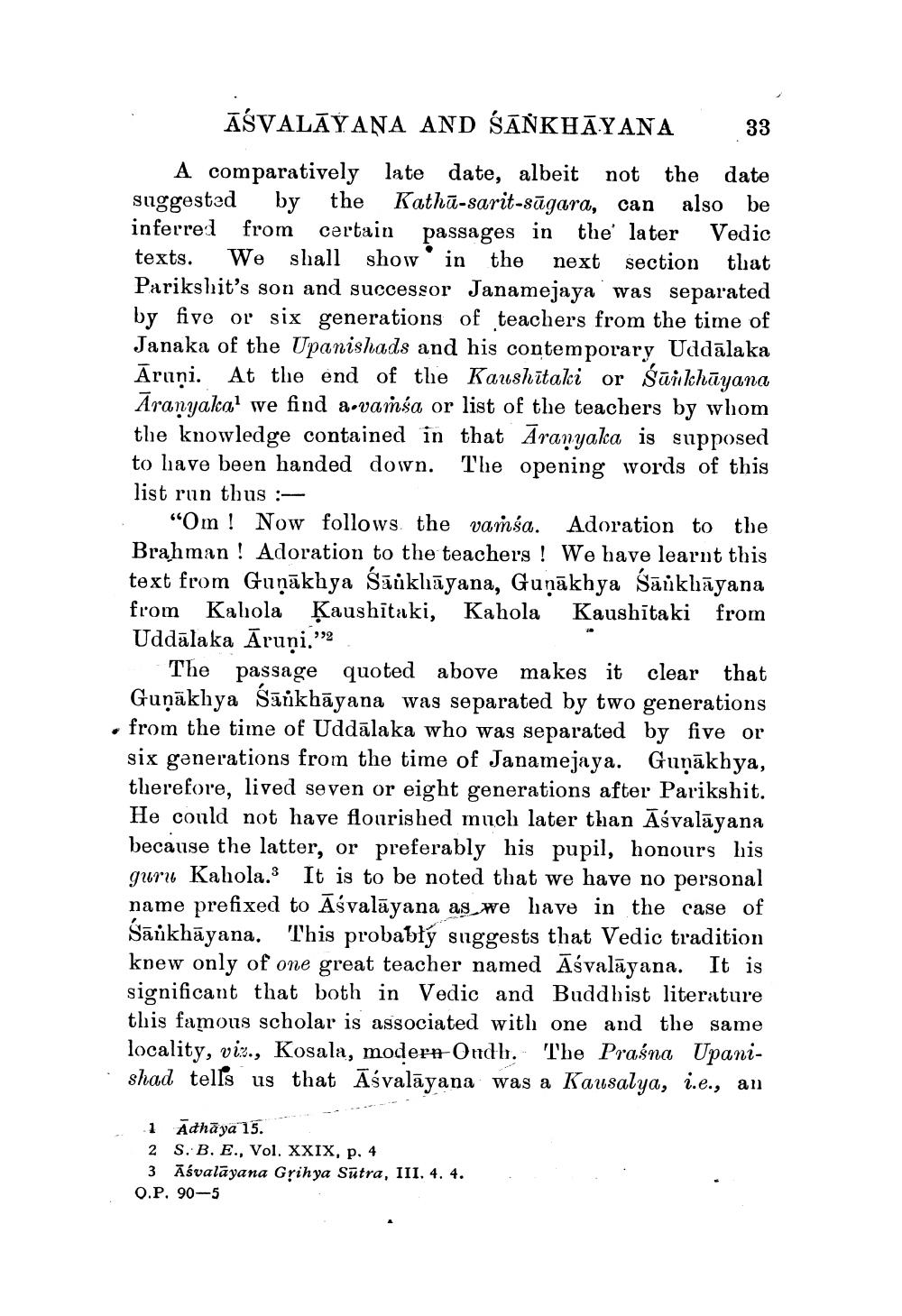________________
ASVALAYANA AND SANKHAYANA
33
A comparatively late date, albeit not the date suggested by the Katha-sarit-sagara, can also be inferred from certain passages in the later Vedic texts. We shall show in the next section that Parikshit's son and successor Janamejaya was separated by five or six generations of teachers from the time of Janaka of the Upanishads and his contemporary Uddalaka Āruni. At the end of the Kaushitaki or Sunkhāyana Aranyaka1 we find a-vamsa or list of the teachers by whom the knowledge contained in that Aranyaka is supposed to have been handed down. The opening words of this list run thus :
"Om! Now follows the vamsa. Adoration to the Brahman! Adoration to the teachers! We have learnt this text from Gunakhya Sankhāyana, Guṇākhya Sāůkhāyana from Kalola Kaushitaki, Kahola Kaushitaki from Uddālaka Āruņi.”
The passage quoted above makes it clear that Guṇakhya Sankhayana was separated by two generations from the time of Uddalaka who was separated by five or six generations from the time of Janamejaya. Guṇākhya, therefore, lived seven or eight generations after Parikshit. He could not have flourished much later than Aśvalayana because the latter, or preferably his pupil, honours his guru Kahola. It is to be noted that we have no personal name prefixed to Āśvalāyana as we have in the case of Sankhayana. This probably suggests that Vedic tradition knew only of one great teacher named Aśvalayana. It is significant that both in Vedic and Buddhist literature this famous scholar is associated with one and the same locality, viz., Kosala, modern Oudh. The Prasna Upanishad tells us that Asvalayana was a Kausalya, i.e., an
1 Adhaya 15.
2 S. B. E., Vol. XXIX, p. 4
3 Aśvalayana Grihya Sutra, III. 4. 4.
O.P. 90-5




